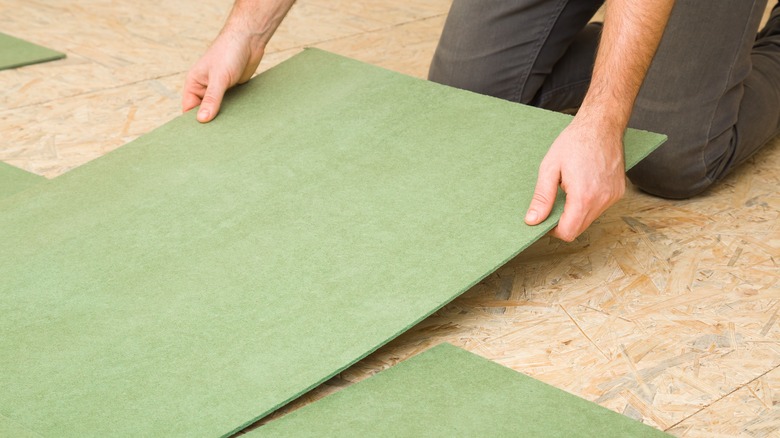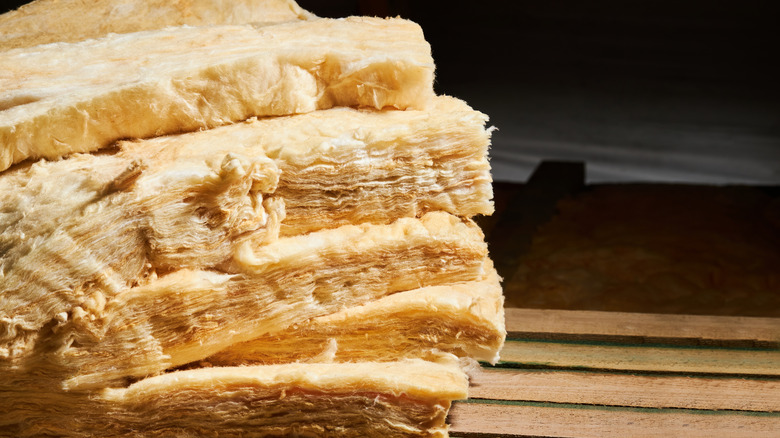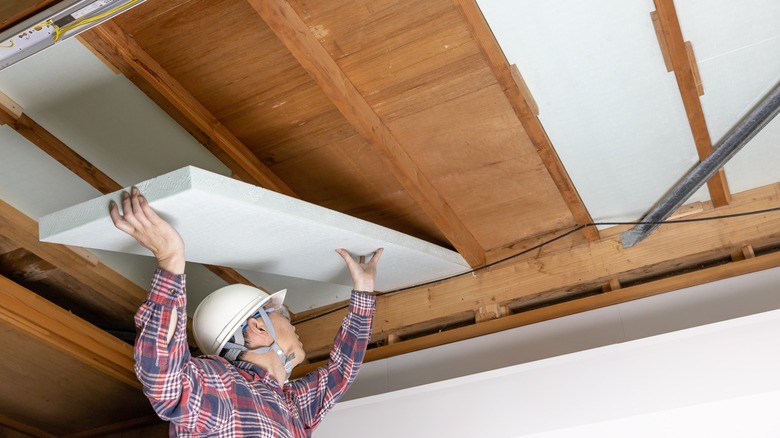What Is Underfloor Insulation And Is It Worth It?
Running your heater or air conditioner is a great way to keep warm or cool in months with more dire temperatures, but it can run up a very steep power bill quite quickly. Most average homes in the United States spend around $117.46 on their electric bill alone, which is largely due to running their HVAC system, via Move.
There are plenty of ways to help reduce your energy and electric bills, from repairing cracks in your walls, resealing your windows, replacing or upgrading your HVAC system, installing energy-efficient windows, and more. Every method boils down to keeping the air inside your house from escaping and outside air from leaking inside. While most people tend to only focus on the walls, this can also be a flooring issue, especially in older homes or those with improperly insulated floorboards, tiles, etc. Consider adding underfloor insulation to your home to help regulate temperatures, increase energy efficiency, and lower bills.
How insulation works
Most people are familiar with the importance of insulation in their walls and attic, but not flooring. But first, a brief rundown of how insulation works to understand better why you need it for your underfloor. Insulation is usually made of fiberglass, cellulose, or foam, per Home Depot, which fills gaps in your home's structures to keep hot or cold air out of your home and keep the cool or warm air inside, depending on the season.
Proper insulation cuts back on each method by which heat is transferred, including conduction, convection, and radiation, via Eco Home Essentials. When it's cold outside, the cold air won't be able to enter your home as easily through the thick layer of insulation, and the warm air from your heater won't escape as quickly, and vice versa in the summer, resulting in a more efficient HVAC system and a lower electric bill. However, this only works if your home is properly insulated, including the underflooring.
Older homes tend to have suspended timber flooring, meaning the wood floorboards are raised off the ground with joists to prevent dampness, rot, or condensation from direct contact with the ground, explains Eco Home Essentials. However, this leaves the underside of your floor exposed to open airflow, which leads to drafts and negates the work of your existing insulation. You can correct this, however, by installing underfloor insulation.
Benefits of underfloor insulation
To ensure your home is insulated correctly, you should add insulation to your underfloor, especially if you have suspended timber flooring. This is most common in older or historic houses, but it can also be found in more modern builds. This extra padding will not help your home regulate its temperature better and increase energy efficiency, but it can significantly reduce the creakiness of your floorboards, according to Pricewise Insulation.
While suspended timber flooring was designed to reduce condensation and moisture, high humidity can get trapped in your underfloor and lead to rot or mold. Hygroscopic insulation can help reduce this likelihood, per Eco Home Essentials. It can cost anywhere from $1 to $2.50 per square foot to install underfloor insulation, but it reduces your energy bill by roughly 10%, if not more, and leads to an overall more energy-efficient home, via Forbes. If you have the time and money, installing insulation under your flooring is a good idea, especially in older homes.


